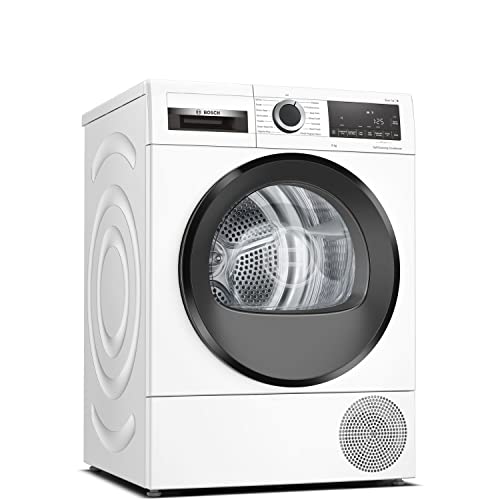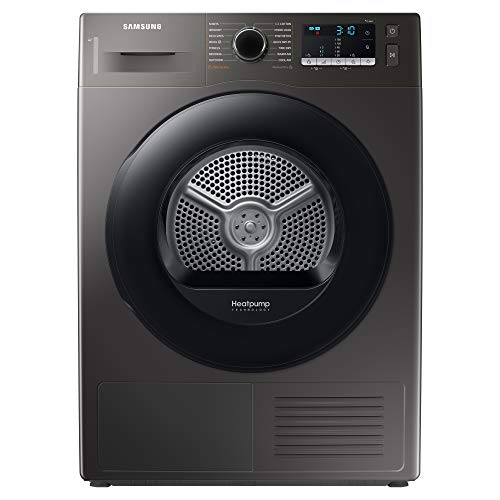How To Tell If You're Ready For Washer Dryer Heat Pump
페이지 정보
작성자 Steven 댓글 0건 조회 45회 작성일 24-03-07 22:55본문
 Why Buy a Washer Dryer Heat Pump?
Why Buy a Washer Dryer Heat Pump?Consider a heat pump technology-pump model when you're looking for an appliance that can wash and dry both. These ventless dryers take a longer to dry and require more electricity than traditional vent-controlled dryers. However they are also quieter and washer dryer heat pump do not require ducting or ventilation.
The machines utilize a heat pump loop to circulate air and recirculate water from the clothes back into the drain tube. Learn more about the technologies behind these ENERGY STAR certified machines.
Evaporative Drying
Evaporative drying uses hot air to evaporate water and eliminate the moisture from your clothes. It takes longer to evaporate than dryers which use heat. However, as NYC shifts towards a half-natural gas energy mix and a greater use of renewable sources of energy in the next 10-20 year, you can expect an improvement in the efficiency of your dryer. In the case of the washer dryer heat pump, electricity is used to draw heat from the air and transform it into the heat needed for evaporation. They consume less energy and are therefore more efficient.
Heat pump dryers work like conventional dryers, but they are equipped with the components of a refrigeration system to provide air conditioning (evaporator and condensation). The cooling section of the refrigerant cycle is used to dehumidify the dry air, which then flows through the evaporator of the heat pump. The dryer then reheats the dry air dehumidified to provide drying heat.
This process generates lots of condensation water that needs to be discarded. This can be done by hand using a draining hose or using an instrument that directs the water flow from the airflow to a sink or tub in the laundry room. Researchers have examined the effectiveness of heat pumps in drying processes, with a focus on evaluating performance in relation to the dehumidification process. A good method for this is exergy analysis. Exergy analysis compared the actual efficiency of a procedure with its ideal performance, which can be calculated by determining the energy required to achieve the desired outcomes in the process.
Idealistically, the process would generate energy equal to the input or greater but this isn't always the case especially in a heat pump dryer. This is due to the fact that there is a certain amount of lost heat from vaporization could be included in the energy of the process of evaporation.
Researchers have examined the performance of a heat pump dryer by modeling it using an algorithm for computer simulation. The results of this study suggest that the energy efficiency of the heat pump dryer is dependent on the amount of dehumidification energy it generates as well as the temperature of the air in the evaporator, and the ratio of recirculating air versus dry air in the evaporator.
Water Condensation Drying
If you want to go more eco-friendly than drying by evaporation, you can buy washer dryer heat pump combos that make use of water condensation to dry clothes. These are typically more expensive, but they can be less expensive to operate.
Most combination washer-dryers that use condensation drying function similarly to traditional tumble dryers, with the exception that they heat up the air that's taken out of the clothes and then cool it until the moisture in the air condenses back into water and is then taken away. The cool air is returned to the drum for more heating and more evaporation, which continues until all the clothes are completely dry.
The energy used by dryers like these is far smaller than electric or gas dryers of the past however, they're more than two times as expensive to operate as the standard dryers. The dryers must be heated to allow the air before venting it outside.
They can also save energy than the unit itself. They are therefore best suited for households with low electric costs.
If you have a laundry room with windows You can save more by connecting the dryer to a drainpipe which leads directly outside. This is called ventless drying.
If you opt for a dryer that uses this method, be sure to connect it correctly. The connector to connect the hose is located at the bottom right of the dryer and there's usually an holders for the hose on top of it. Take the hose off and put the new one in the holder. Make sure the hose doesn't hang from the holder for more than 10cm. This could cause it to be disconnected from the dryer and cease to function.
Ventless Dryers
Ventless dryers are an excellent option for NYC homeowners who reside in homes or apartments that aren't compatible with traditional vented dryers. They are energy efficient and use less gas than vented dryers, so they can save money over time. They are also smaller and don't require an external vent or duct. You can install a vented dryer in your laundry or anywhere in the home.
 Ventless dryers dry your clothes by two methods: either air-toair condensation or cool-water condensation. They take heat from air and transfer it to the clothes inside the drum, so they are more efficient in energy than vented dryers.
Ventless dryers dry your clothes by two methods: either air-toair condensation or cool-water condensation. They take heat from air and transfer it to the clothes inside the drum, so they are more efficient in energy than vented dryers.Since they do not rely on hot air to dry your clothes They are gentler on your clothes. This is crucial because excessive heat can damage delicate fabrics and cause fading or color running, especially if your clothes are made of synthetic materials.
A heat pump dryer is also more efficient in energy than a condensing model. This is because they use an evaporator, which absorbs the moisture in the air in the drum, and they convert it to water. It is a closed system therefore there are no wastes.
It is crucial to remember that these appliances require regular maintenance in order to function at optimum levels. They should be regularly emptied of condensed water, and cleaned of lint. Some models come with a reservoir built-in that needs to be regularly emptied, while others can connect to a plumbing drain for automatic water disposal. The lint trap must be cleaned and checked on a regular basis to ensure the effectiveness of the appliance.
Energy Efficiency
With energy prices high and no signs of relief, it makes sense for laundry rooms to search ways to cut down on their energy consumption. Replace a standard dryer with an electric heater pump for the washer to lower the cost of energy.
These systems pull air from outside and use a refrigerant in order to draw heat from it. The air is then pumped through heat exchangers and converted into heat to dry clothes. This heat is transferred to the drum of the dryer and used as a source of energy for the entire process. It is also used to heat water used for washing. The dryer uses the hot water to power its spin cycle. This helps reduce energy use and helps save money.
The system operates in two closed cycles that are one for air and the other for refrigerant. The first one uses a fan that blows warm air from the outside over fins on a cold side of the heatpump. This air collects heat energy, which is then transported away by coils on this side. The air is then blown back over the hot-side fins in order to draw more energy and the process continues throughout the drying process.
When the air is saturated with heat, it goes through a second set of coils on the cold side of the pump. It then turns into liquid. This liquid is then transported to a compressor that increases the temperature and transforms it into gas. The liquid then moves through the dryer, where it vaporizes into hot air, and then dry the clothes.
The hot air is then blown out of the dryer, reducing the energy consumption by a significant amount. The motor that drives the drum of the dryer is the only source of energy left. It consumes a tiny amount at all times.
They are 28 percent more efficient than traditional dryers that have an Energy Star rating around 4.3. This efficiency is due in part to the fact that they don't require vents for dryers and can operate during the same temperatures as your central heating and cooling system. Additionally, the absence of a dryer vent decreases the need for ductwork, which cuts installation costs and improves overall energy efficiency.
댓글목록
등록된 댓글이 없습니다.

